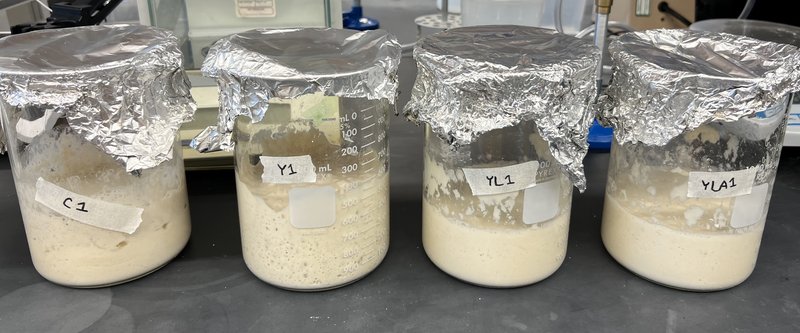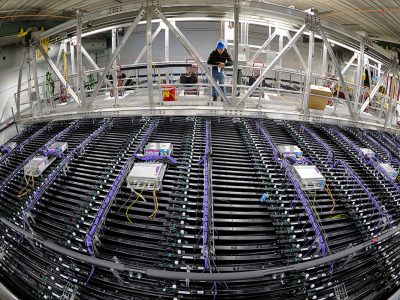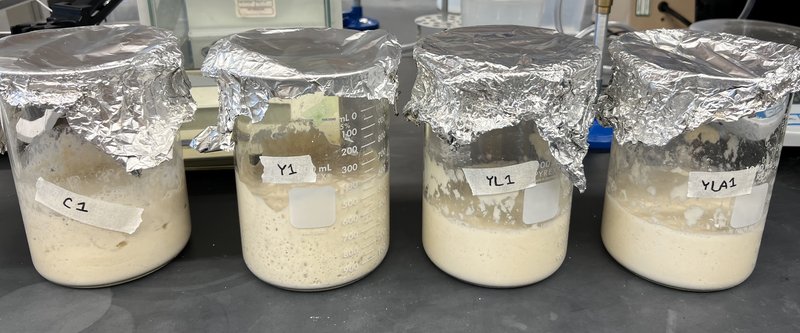
When millions of people went into lockdown during the pandemic, they went in search of new at-home hobbies to help cure their boredom. Among them was making sourdough bread. In addition to being sustainable for its use of natural ingredients and traditional methods which date back thousands of years to ancient Egypt, it also is valued for its nutritional benefits. For example, studies have shown that sourdough contains more vitamins, minerals and antioxidants compared to many other types of bread. For people with mild sensitivities to gluten, sourdough bread can be easier to digest since much of the gluten is broken down during the fermentation process. What’s more, many lactic acid bacteria species, which are foundational to sourdough, are considered probiotics, associated with improved gastrointestinal health.
A Flavor Profile Years in the Making
The process of making sourdough bread begins with a sourdough starter. These starters are created when microbes–communities of bacteria and yeast–stabilize in a flour and water mixture. Known as a microbiome, this community of wild yeast and bacteria is what makes sourdough bread rise and contributes to its taste and texture. Sourdough notably differs from most bread because it relies on this starter of wild microbes to help it rise instead of baker’s yeast packets.
Many sourdough starters are preserved over generations, with some samples dating back thousands of years. To maintain a sourdough starter, you extract a sample from a previous dough and mix it into new flour and water. With enough transfers of the sourdough starter, the microbial community will be composed of the yeast, lactic acid bacteria (LAB), and acetic acid bacteria (AAB) that are best adapted to the sourdough environment. What makes different sourdough starters unique are the varying strains of yeast and bacteria that produce the distinctive sour flavor.
Testing Genetic Diversity
Advances in sequencing technology have enabled researchers to rapidly profile microbial communities, such as the sourdough microbiome. In the College of Arts and Sciences, members of biology professor Angela Oliverio’s lab have been studying acetic acid bacteria to determine how genetic diversity of AAB impacts sourdough communities.
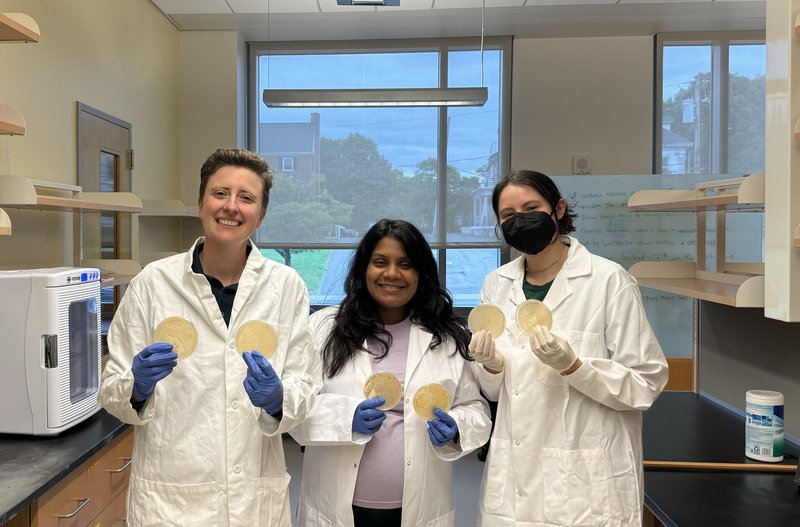
While previous research has focused more on lactic acid bacteria and yeast, the ecology, genomic diversity and functional contributions of AAB in sourdough remain largely unknown. Beryl Rappaport, a Ph.D. student in Oliverio’s group, recently led a paper published in mSystems, a journal of the American Society for Microbiology, where she and other sourdough scientists, including Oliverio, Nimshika Senewiratne from the Oliverio lab, SU biology professor Sarah Lucas, and professor Ben Wolfe from Tufts University, sequenced 29 AAB genomes from a collection of over 500 sourdough starters and constructed synthetic starter communities in the lab to define the ways in which AAB shape emergent properties of sourdough. The team’s work was supported by a National Science Foundation grant awarded to Oliverio earlier this year.
“While not as common in sourdough as lactic acid bacteria, acetic acid bacteria are better known for their dominant roles in other fermented foods like vinegar and kombucha,” says Rappaport. “For this study, we were interested in following up on previous findings which stated that when present in sourdough, AAB seems to have a strong impact on key properties including scent profile and metabolite production, which shape overall flavor formation.”
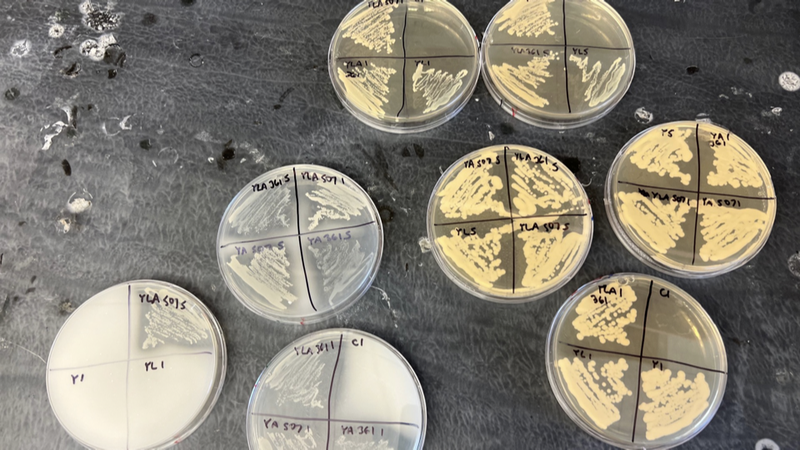
To assess the consequences of AAB on the emergent function of sourdough starter microbiomes, their team tested 10 strains of AAB, some distantly related and some very closely related. They set up manipulative experiments with these 10 strains, adding each one to a community of yeast and LAB. They kept a separate community of just yeast and LAB to serve as the control.
“Since we can manipulate what microbes and what concentrations of microbes go into these synthetic sourdough communities, we could see the direct effects of adding each strain of AAB to sourdough,” says Rappaport. “As we expected, every strain of AAB lowered the pH of the synthetic sourdough (associated with increasing sourness) since they release acetic acid and other acids as byproducts of their metabolic processes. Unexpectedly, however, AAB that were more closely related did not release more similar compounds. In fact, there was high variation in metabolites, many related to flavor formation, even between strains of the same species.”
According to Rappaport, strain diversity is often overlooked in microbial communities, in part because it is difficult to identify and manipulate levels of diversity due to the vastness of microorganisms within a given community. The human gut biome alone can have roughly 100 trillion bacteria living in it! By zooming into the diversity among closer relatives in the lab, researchers can start to understand key interactions in microbiomes.
To read the full story, visit the College of Arts and Sciences website.
